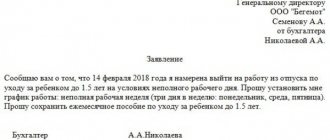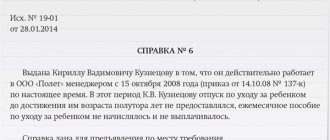This year, the calculation of social benefits has a number of features:
- the billing period has changed: a larger amount of earnings for 2016-2017 is included in the calculation, as the limit of payments taken into account has increased;
- the maximum average earnings increased to 2,017.81 rubles;
- benefits paid from 02/01/2018 increased, they were indexed 1.025 times;
- from January 1, 2021, along with the increase in the minimum wage (from 7,800 to 9,489 rubles), the minimum average earnings for calculating benefits increased from 256.44 rubles to 311.97 rubles;
- from May 1 of this year, the minimum wage will reach the subsistence level of 11,163 rubles, which will affect the growth of the minimum average earnings; from 05/01/2018 its value will be 367 rubles.
We will show this using specific examples of calculations and consider the controversial issues of reimbursement of benefits.
Indicators for calculating benefits have changed for 2018
The procedure for calculating VNIM benefits states that they must be calculated based on the employee’s average earnings, calculated for the two calendar years preceding the occurrence of the insured event (Article 14 of Law No. 255-FZ).
The calculation period for benefits assigned this year will be 2016-2017. To calculate benefits, a larger amount of earnings is taken, since the limit of payments taken into account has increased: RUB 1,473,000. (RUB 755,000 + RUB 718,000).
Maximum daily earnings: the amount of payments taken into account in the calculation is limited by the maximum base for calculating contributions to VNiM in the corresponding year:
The data in the table shows that with the change in the billing period, the maximum amount of earnings for benefits increased, since the calculation takes into account the maximum values for 2016-2017: RUB 2,017.81. (RUB 1,473,000 / 730 days). For an insured event that began in 2021, this figure when calculating benefits will be 1,901.37 rubles. ((RUB 670,000 + RUB 718,000) / 730 days).
Average daily earnings: for 2018 benefits, the billing period includes the leap year 2021, which includes 366 calendar days, so the number of days in the billing period is 731 days (366 days + 365 days). This means that when calculating child and maternity benefits, the maximum income must be divided by 731 to calculate the actual average daily earnings (similar to the calculation of benefits assigned in 2021).
TABLE: “Base for calculating insurance premiums for VNiM”
| Year | Maximum base (in rubles) |
| 2017 | 755 000 |
| 2016 | 718 000 |
| 2015 | 670 000 |
Let's look at the nuances of calculating benefits using examples.
Example 1 (calculation of sick leave benefits)
The employee was sick for 5 days in February 2021, his insurance coverage is 10 years.
Earnings in 2021 – 740,000 rubles, in 2021 – 750,000 rubles.
There are no periods excluded when calculating average daily earnings.
To calculate average earnings, the employee’s income for 2016 is taken into account in the amount of RUB 718,000. (within the base) and for 2021 in the amount of 750,000 rubles. (in fact).
Average daily earnings - 2,010.96 rubles. (RUB 718,000 + RUB 750,000) / 730 days.
Let’s compare the amount received with the minimum daily earnings, calculated based on the minimum wage in effect at the time of the insured event (RUB 9,489).
The minimum earnings are 311.97 rubles. (RUB 9,489 x 24 months / 730 days). It is less than the actual one, so for the calculation you need to take the actual one (with 10 years of experience, 100% is taken).
The benefit amounted to 10,054.80 rubles. (RUB 2,010.96 x 5 days x 100%).
Example 2 (calculation of maternity benefits)
The employee goes on maternity leave for 140 calendar days from January 23, 2018.
Accounted payments: in 2021 - 690,000 rubles, in 2021 - 720,000 rubles.
There are no periods excluded when calculating average daily earnings.
Let's determine the actual average daily earnings: 1,928.86 rubles. (690,000 rub. +720,000 rub.) / 731 days. It does not exceed the maximum earnings (2,017.81 rubles) and more than the minimum (311.97 rubles).
Therefore, for the calculation we take the actual daily earnings.
The benefit will be 270,040.40 rubles. (RUB 1928.86 x 140 days x 100%).
Example 3 (calculation of maternity benefits for additional leave)
The woman went on maternity leave on December 13, 2017. The maternity benefit for 140 days is calculated from the average daily earnings for 2015 - 2021 - 1,530 rubles. In May 2021, the employee received additional sick leave for pregnancy and childbirth for 16 days (from 05/02/2018 to 05/17/2018).
The amount of maternity benefit for additional leave is 24,480 rubles. (RUB 1,530 x 16 days).
Example 4 (calculation of maternity benefits in the presence of periods excluded from average earnings)
The employee goes on maternity leave in February 2018. In 2021, she was paid a salary of 620,000 rubles. and temporary disability benefits – 28,000 rubles. (11 calendar days). In 2017, her salary was 680,000 rubles.
Payments will amount to RUB 252,777.78. (620,000 rub. + 680,000 rub.) / (731 days – 11 days) x 140 days.
Minimum benefit for temporary disability, pregnancy and childbirth
If the employee had no earnings or had little earnings in the two previous years, then the calculation of benefits for temporary disability and maternity benefits is based on their minimum wage. In this case, the minimum wage is determined on the date of onset of temporary disability.
If temporary disability began on May 1, 2018 or later, then the new minimum wage is used.
The minimum average daily earnings for temporary disability benefits if the illness began after May 1, 2018 is:
RUB 11,163 x 24 months : 730 = 367 rub.
If an employee fell ill before May 1, 2021, then the amount of the minimum benefit will be determined based on the “old” minimum wage = 9,489 rubles, even if the illness continued in May 2021.
Benefits have increased by 2.5 percent since February.
From February 1, 2021, certain social payments and compensations, including child benefits, have been indexed.
The growth of payments is influenced by the level of consumer price growth, which is established by Rosstat. At the end of 2021, the indexation amount was 1.025.
Applying this figure to the old benefits, we get new amounts effective from 02/01/2018.
TABLE “Amounts of child benefits, taking into account indexation from 02/01/2018”
| Benefit | Amount (rub.) |
| One-time benefit when registering at a antenatal clinic before 12 weeks of pregnancy (payment is made simultaneously with the payment of maternity benefits upon presentation of the appropriate medical certificate) | 628,47 (until 02/01/2018 - 613.14) |
| One-time benefit for the birth of a child (paid at the place of work or at the social security authorities, any of the parents (mother or father) or the person replacing them has the right to this benefit) | 16 759,09 (until 02/01/2018 – 16 350,33) |
| Minimum amount of benefit for caring for the first child | 3 142,33 (until 02/01/2018 – 3,065.69) |
| Minimum amount of benefit for caring for a second child and subsequent children | 6 284,65 (until 02/01/2018 – 6,131.37) |
Let's show with an example how this indexing works.
Example 5 (calculation of child care benefits up to 1.5 years old)
The employee is going on maternity leave from 04/09/2018 to care for her second child.
In the calculation period (2016-2017), she was sick for 18 days.
Payment amounts taken into account when calculating average daily earnings: in 2021 - 650,000 rubles, in 2021 - 690,000 rubles.
The number of calendar days taken into account for the calculation is 713 days (731 days – 18 days).
Average daily earnings – 1,879.38 rubles. (650,000 rub. + 690,000 rub.) / 713 days. It is less than the maximum limit of this indicator (2,017.81 rubles) and more than its minimum value (311.97 rubles).
Therefore, to calculate benefits, we take the actual average earnings.
The amount of benefit for each full month is RUB 22,853.26. (RUB 1,879.38 x 30.4 days x 40%), this is more than the minimum benefit amount (RUB 6,284.65), so the benefit is calculated from actual earnings.
The benefit amount for April is 12,188.41 rubles. (RUB 22,853.26 / 30 days x 16 days).
Example 6 (calculation of child care benefits based on the minimum)
The employee has been on maternity leave since the beginning of February 2021 to care for her first child. Insurance experience more than 6 months.
Accounted income for 2021 is 95,000 rubles, for 2021 - 85,000 rubles. (years cannot be changed as this will not result in an increase in benefits). The days excluded from the calculation are 189, so we will take 542 days into account (731 days - 189 days).
To calculate average earnings, we take all actual incomes, since they do not exceed the maximum values for both years of the billing period.
Average daily earnings - 332.10 rubles. (95,000 rubles + 85,000 rubles) / 542 days, it is less than the maximum (2,017.81 rubles) and more than the minimum (311.97 rubles), so to calculate the benefit we take actual earnings.
Monthly allowance – 4,038.34 rubles. (RUB 332.10 x 40% x 30.4 days).
This is more than the established minimum (RUB 3,142.33), so the woman will receive RUB 4,038.34 monthly.
DECREE of the Government of the Russian Federation dated January 26, 2018 No. 74.
Maternity payments and child benefits. How much will they pay in 2021?
According to certain laws, there is a maximum payment limited to a specific amount of average daily earnings. Its value is regularly indexed, but for a number of highly paid positions the indicator is frankly not enough. However, the vast majority of working women still fall within the maximum allowed accrual limit. Moreover, the majority of recipients, even in a year, sometimes earn less than the highest available maternity benefits.
To understand the process of calculating subsidies for B&R, you need to know its main features. In particular, many women do not have full information that the duration of maternity leave varies, although for the majority of expectant mothers, sick leave is issued at the 30th week of pregnancy.
The standard payment is made in a lump sum for the entire period of the required vacation of 140 days. There is another duration of sick leave - 156 or 194 days. In the latter case, sick leave also has an initially fixed duration, because This is the number of days required for a multiple pregnancy, which is usually known to doctors in advance. The duration of sick leave of 156 days is determined for complicated childbirth. In this case, a separate certificate of incapacity for work is issued for an additional 16 days.
For pregnancy and childbirth. Minimum - 58,878.4 R, maximum - 340,795 R for 140 days.
Care for up to one and a half years. Minimum - 6,752 R, maximum - 29,600.48 R per month.
Sick leave. Minimum - 412.65 R, maximum - 2434.25 R per day.
Up to 3 years and from 3 to 7 years. The income of unemployed parents is taken into account; the maximum per capita income and the amount of payment depend on the cost of living for the second quarter of 2020.
From January 1, 2021, the minimum wage has increased
The minimum salary increased from 7,800 to 9,489 rubles.
The size of the minimum wage affects the amount of benefits. With the growth of the minimum wage, the minimum average earnings grows (Article 14 of Law No. 255-FZ).
In accordance with the bill, from May 1 of this year the minimum wage will reach the subsistence level - 11,163 rubles. (Draft Federal Law No. 374313-7).
Therefore, the minimum average daily earnings to pay for maternity and sick leave benefits will be upon the occurrence of an insured event:
- from 01.07.2017 to 31.12..2017 - 256.44 rubles. (RUB 7,800 x 24 months / 730 days);
- from 01/01/2018 to 04/30/2018 - 311.97 rubles. (RUB 9,489 x 24 months / 730 days);
- from 05/01/2018 (if the bill is adopted) - 367 rubles. (RUB 11,163 x 24 months / 730 days).
Example 7 (calculation of sick leave benefits based on the minimum wage)
The employee was first hired in March 2021 and became ill in the same month. There is no insurance guard. According to the sick leave certificate, the employee was sick from 03/26/2018 to 04/06/2018.
In this case, the benefit cannot be calculated based on average earnings, since there is no income in the billing period (2016-2017). In this case, the average earnings, on the basis of which sick leave benefits are calculated, are taken to be equal to the minimum wage on the day the insured event occurred.
From January 1, 2018, the minimum wage is RUB 9,489.
Therefore, the average daily earnings are calculated based on this “minimum wage”: 311.97 rubles. (RUB 9,489 x 24 months / 730 days).
The average salary taking into account the insurance period (less than 5 years) is 187.18 rubles. (RUB 311.97 x 60%).
We will calculate the maximum possible daily benefit taking into account the established limit (Part 6, Article 7 of Law No. 255-FZ), since the sick person’s length of service on the day of the insured event is less than six months:
- in March: 306.10 rub. (9,489 rubles / 31 days), which is more than 187.18 rubles;
- in April: 316.30 rub. (9,489 rubles / 30 days), which is more than 187.18 rubles.
The amount of the calculated benefit is RUB 2,246.16. (RUB 187.18 x 12 days).
Example 8 (calculation of maternity benefits based on the minimum wage)
The woman got a job at the company on July 4, 2017 (first job). In February 2021, she went on maternity leave. Salary in 2021 – 125,000 rubles.
Average earnings for the billing period (2016-2017) – 171 rubles. (RUB 125,000 / 731 days).
This is less than the minimum average daily earnings, calculated based on the minimum wage (311.97 rubles = 9,489 rubles x 24 months / 730 days).
Therefore, the benefit will be 43,675.80 rubles. (RUB 311.97 x 140 days).
Example 9 (calculation of child care benefits if the average daily earnings are less than the minimum)
The average daily earnings of a worker who went on leave to care for her first child in February 2018 turned out to be less than the minimum average daily earnings of 311.97 rubles.
In this case, the monthly benefit will be 3,795.60 rubles. (RUB 9,489 x 40%). With a further increase in the minimum wage, a revision of the calculated benefit is not provided (clauses 11, 23 of the regulation on the calculation of benefits, approved by Decree of the Government of the Russian Federation of June 15, 2007 No. 375).
FEDERAL LAW No. 421-FZ dated December 28, 2017.
In connection with this, the calculation of benefits is changing from 05/01/2018
The calculation of benefits changes due to the new minimum wage starting from May 1, 2018. The new minimum wage is set at RUB 11,163. The corresponding changes were made by Federal Law No. 41-FZ dated 03/07/2018.
In which calculations for benefits is the minimum wage used:
- To determine the minimum amount of benefits for temporary disability, pregnancy and childbirth, if the employee had no earnings / had little earnings in the two previous years.
- To determine the maximum amount of temporary disability benefits if there has been a violation of the regime.
- To determine the minimum amount of monthly child care benefits up to 1.5 years .
“Traumatic” payments are indexed
The amount of the monthly insurance payment is subject to indexation once a year from February 1 of the current year based on the consumer price growth index for the previous year
Its maximum amount cannot exceed in 2021 - 72,290.4 rubles. (Law dated July 24, 1998 No. 125-FZ).
From February 1, taking into account the indexation coefficient (1.025), the amount paid for injury increased to 74,097.66 rubles.
The maximum benefit amount for a full calendar month is limited to four times the maximum monthly insurance payment,
Thus, the maximum monthly benefit for an employee who suffered from a work injury from February 2018 will be no more than 296,390.64 rubles. per month (RUB 74,097.66 x 4).
Let’s calculate the amount of compensation “for injury”.
Example 10 (calculating monthly injury benefits)
Salary payments subject to “traumatic” contributions amounted to 900,000 rubles in 2021, and 950,000 rubles in 2021. The employee's insurance experience is five years.
In February 2021 (from 5 to 20 - 16 days) the employee was on sick leave due to a work-related injury.
We determine the average daily earnings of an employee: 2,534.25 rubles. (900,000 rub. + 950,000 rub.) / 730 days.
The amount of benefit calculated for a full month is 70,959 rubles. (RUB 2,534.25 x 28 days), does not exceed the maximum value of RUB 296,390.64.
Therefore, we calculate the benefit based on average earnings of 2,534.25 rubles.
The benefit, which will be fully paid by the Social Insurance Fund, will be 40,548 rubles. (RUB 2,534.25 x 16 days).
The maximum amount of temporary disability benefits if there has been a violation of the regime
To determine the maximum amount of temporary disability benefits if there has been a violation of the regime, the minimum wage in force in the month in which the illness occurs .
For example, let an employee be sick from 04/25/2018 to 05/11/2018, and the submitted certificate of incapacity for work contains a note about violation of the regime from 04/28/2018:
To calculate the maximum benefit amount for the period of illness falling in April 2021, the “old” minimum wage is used:
The maximum daily allowance in April 2021 is:
- Minimum wage 9,489 rub. : 30th calendar day in April = 316.30 rubles.
To calculate the maximum benefit amount for a period of illness falling in May 2021, the new minimum wage is used, regardless of the fact that the illness began in April 2021:
The maximum daily allowance in May 2021 is:
- Minimum wage 11,163 rub. : 31 calendar days in May = 360.10 rubles.
Child benefit plus salary: when possible
The Labor Code of the Russian Federation allows employees to simultaneously be on parental leave and work part-time. In this case, both benefits and wages for the time worked are due. The question is how much the working hours of such employees need to be shortened so that they can receive benefits and the employer does not have problems with controllers.
Labor legislation does not provide a direct answer. In this regard, it can be assumed that any working time other than the norm (less than 8 hours a day) is incomplete. For example, in the Determination of April 11, 2013 No. VAS-4041/13, the Supreme Arbitration Court of the Russian Federation noted that if an employee is on parental leave and at the same time works only 12 minutes less than his colleagues, he has the right to count on social benefits.
However, last year the arbitrators decided that such a defect does not give the right to benefits from the state (Determination of the Supreme Court of the Russian Federation dated July 18, 2017 No. 307-KG17-1728, Resolution of the Arbitration Court of the Ural District dated August 14, 2017 No. F09-2710/17). Judges consider that in such a situation the employee is not caring for the child. The benefit is not compensation for lost earnings, but a means of additional enrichment.
According to the Federal Social Insurance Fund of the Russian Federation, it is necessary to shorten the working day by 2 hours or more. Otherwise, the employee will not be physically able to care for the child. If the time spent at work is reduced by 5, 10, 30 or 60 minutes, then officials and judges will regard such a reduction as an abuse of law.
Thus, an employee who combines child care and work in the company must stay at work for no more than 6 hours. Otherwise, claims from controllers from the fund are guaranteed. In addition, there is a high probability that the court will also support them.
LETTER from the Federal Insurance Service of the Russian Federation dated January 19, 2018 No. 02-08-01/17-04-13832l.
First day of illness: benefits are not paid if wages are paid
Inspectors from the Federal Social Insurance Fund of the Russian Federation checked the company and refused to credit it for the amounts spent on paying sick leave benefits.
They considered that it was issued in violation of the law - only two days in advance (February 28 and 29). At the same time, the first day of sick leave (February 27) was closed with salary payments.
The company successfully appealed the illegal decision of the fund in court. All three courts found no violations in her actions and overturned the decision of the Federal Social Insurance Fund of the Russian Federation to accrue additional contributions for the disputed amounts.
The courts established that on February 27, 2015, the employee was given sick leave, but he worked a shift, for which he was given a salary.
This excludes payment for the slip for the specified day, because the law does not require that both amounts be transferred at the same time. In this case, the type of payment is chosen by the company.
Themis noted that when paying wages for the first day of illness, the period of incapacity for work does not shift and begins as usual - from the day the sheet is opened.
It turns out that the company fulfilled its sick leave obligations by transferring various payments for the first three days; the rest of the sick time must be paid by the fund.
DECISION of the Arbitration Court of the Ural District dated 01.09.2017 No. F09-4776/17.
Long-term sick leave extended by a doctor: benefits are subject to reimbursement
The Supreme Court of the Russian Federation confirmed that the Social Insurance Fund unlawfully refused to count the benefit towards the transfer of social contributions.
Since the basis for such a decision was only the fact that health workers violated the rules for issuing a certificate of incapacity for work: if an employee was ill for more than 15 days, it was extended by the medical institution without the participation of a medical commission.
The fund did not deny that the employee was indeed ill, so the company justifiably incurred the costs of paying for the disputed certificate.
Judges have previously made similar decisions (Decision of the Supreme Court of the Russian Federation dated 04/07/2017 N 310-KG17-3888).
DECISION of the Supreme Court of the Russian Federation dated July 11, 2017 No. 307-KG17-8074.
Benefits not accepted for offset are not subject to insurance premiums.
The Supreme Court has prepared the fifth review of its practice for 2017.
There are no provisions in the legislation obliging to include in the base for calculating insurance premiums those not accepted by the Social Insurance Fund to offset the amount of insurance coverage paid to employees.
For example, based on the results of an on-site inspection, the fund refused to accept for offset the maternity and temporary disability benefits paid by the company to its external part-time employees.
However, the fund's refusal cannot change the status of these funds.
They are insurance payments due to the occurrence of an insured event. These amounts retain their social orientation and are not remuneration for the employee’s performance of labor functions. Consequently, they are not subject to insurance premiums.
There are no legal norms obliging inclusion in the base for calculating insurance premiums.
“REVIEW of judicial practice of the Supreme Court of the Russian Federation No. 5 (2017).”








